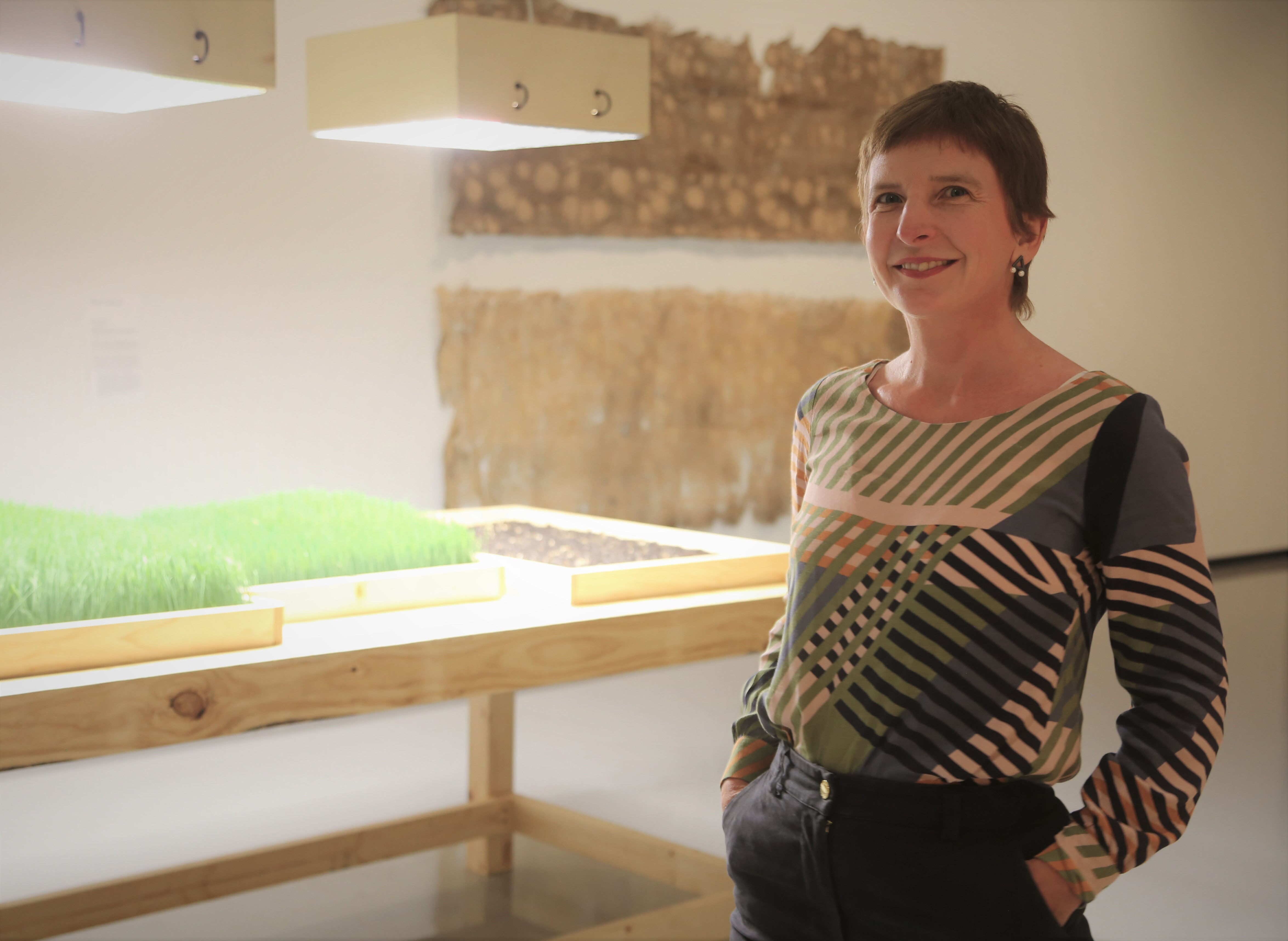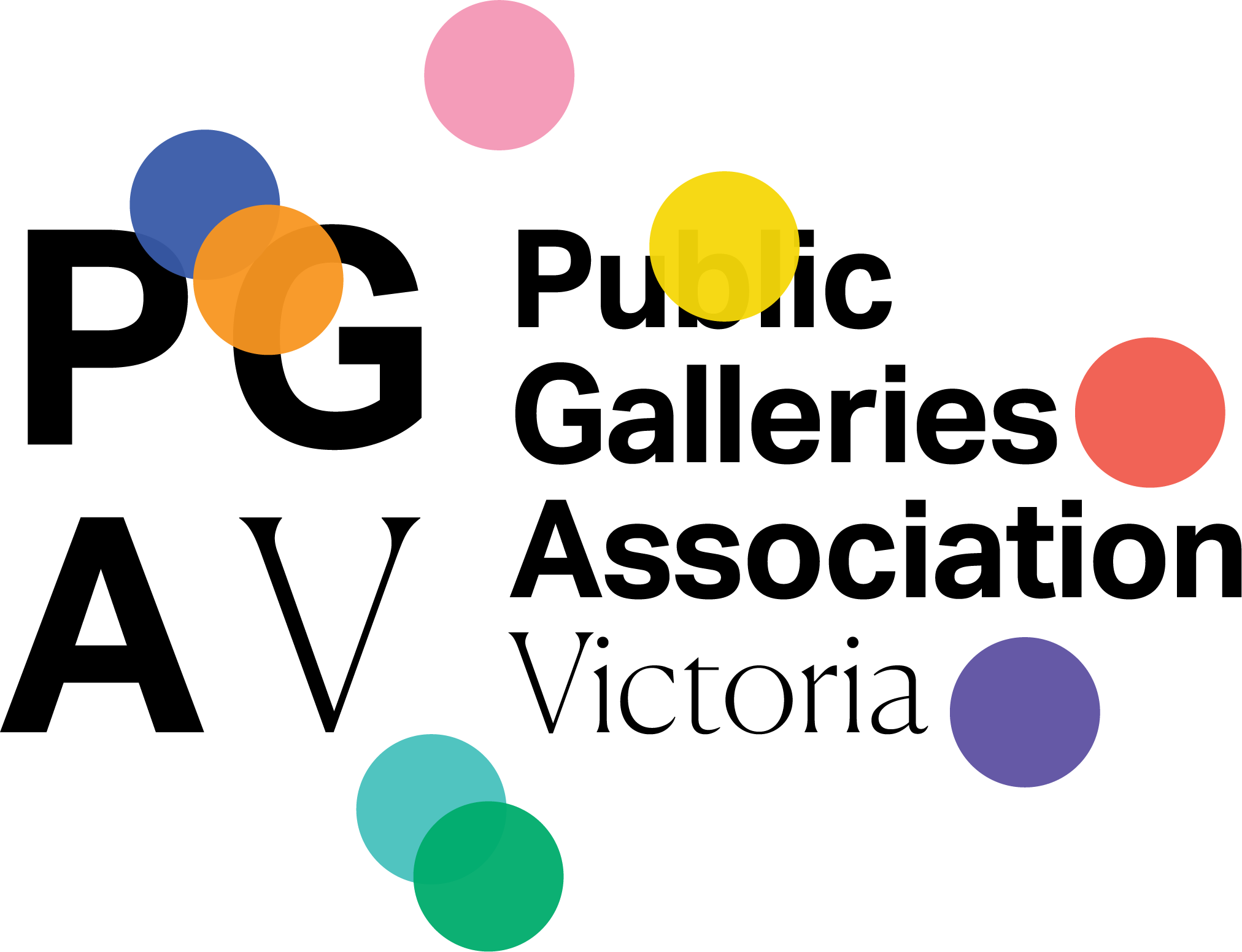Exhibitions Manager
Professions in the Public Gallery Sector

melissa bedford
Education and Audience Development
Monash University Museum of Art (MUMA)
Date: March 2023
the role of education manager
The Education Officer develops a program to encourage school visitation targeting primary, secondary and tertiary along with senior programmes. They identify opportunities to link curriculum outcomes with the exhibition program and may manage an outreach program. They lead a team of paid staff or volunteers that give talks to various age groups and write education material to promote the exhibitions and permanent collection.
For information about roles within public galleries see the PGAV Fact Sheet: Staffing Levels & Position Titles
How did you get started in your career and what formal qualifications or experience do you have?
I hold postgraduate qualifications in Arts, Teaching and Arts Management from the University of Melbourne as well as a Bachelor of Applied Science in Photography from RMIT University. My earliest experience in the arts sector was as a volunteer at Heide Museum of Modern Art during my undergraduate studies. Since graduating from university, I’ve held positions as both art teacher and Head of Visual Arts in secondary schools, where I honed many professional skills. I moved from the classroom into the arts sector in 2010 with a role as Education Officer at the Centre for Contemporary Photography (CCP) . During that time, I also initiated the Fitzroy Art Spaces Tour, a project I worked on for more than a decade. I have been at Monash University Museum of Art (MUMA) since 2012.
What does your role as Education and Audience Development encompass?
My role involves designing and delivering art-led education programs for a diverse range of audiences, encompassing early learners, school and tertiary students, in addition to professional learning programs for teachers. I am responsible for working with artists, academics and collegiate cultural organisations to create workshops, residencies, guided tours and resources designed to engage with MUMA’s exhibitions and collection.
What knowledge and skills do you think are most needed for this role?
The capacity to build and sustain effective interpersonal and working relationships is crucial as MUMA’s most ambitious education projects always involve collaboration and working as part of a team. Being able to improvise and respond to new opportunities for research and innovation as they arise, supporting experimentation, and creative risk-taking is especially important in a contemporary art context. Being organised and adept at scheduling and prioritising creates clear structures to realise projects. A specialist knowledge of the curriculum and an understanding of how to adapt programs to meet the learning needs of those who participate and support them as we go along is paramount when working with students of varying stages on their education journey. Developing a lifelong appreciation for and knowledge of contemporary artists’ practices is at the core of everything we do at MUMA.
What are the benefits for students taking part in a gallery education program?
When children engage in gallery education programs, they’re taking the first steps towards developing greater cultural literacy and capacity for society as a whole. At its best, gallery education can offer a direct experience with art that can be profound, impactful and inspiring, especially for budding creatives who encounter people and artworks in such a way that it that it leads them to find their career pathway. Creative thinking can also be applied across disciplines. It’s been a highlight of my role at MUMA to see undergraduate students enrolled in Monash Faculty of Science’s Global Challenges course interact with artists and divergent models of thinking to delve into global issues. When artists collaborate with MUMA to share their practice through education programs, they exchange ideas with the next generation and guide them to explore the role that art can play in society.
What do you enjoy most about your role?
It is rewarding working with highly motivated and imaginative people in an environment that is committed to creativity. I feel fortunate to share and witness how gallery education can facilitate conversations and encourage attentiveness, contemplation, inquiry and transformation around big issues and ideas in the world. I also love that galleries are reflective public spaces that can simply be uplifting and restorative for our wellbeing.
What has been your career highlight so far?
It’s hard to choose one career highlight. I prefer to think of the moment-to-moment exchanges as a continuum of experiences. Over the years I have been blessed with the opportunity to collaborate with hundreds of Australian and international contemporary artists who’ve collectively shared art-led education with tens of thousands of students. I have literally learnt something new every day from those who I have met along the way.
In 2019, I travelled to the United Kingdom to participate in the Tate Summer School, joining an international community of educators at Tate Exchange in an experiential and participatory course exploring new approaches to teaching and learning through art. This was a professional development dream!
What are the key issues for public galleries into the future?
Creating a welcoming space that feels open and accessible to everyone, and where everyone feels that they belong, is critical for public galleries. Museums like MUMA strive to be at the forefront - speculating about new futures and ways of making and doing things in the world. This makes them incredibly exciting places to be as new ideas springboard into action, but they can also have the affect of unsettling the status quo and catalysing communities to question, debate, interrogate and construct new paradigms and shared meanings. As the world at large changes rapidly, being in touch with and sensitive to the needs and attitudes of audiences while they too are in flux is a dance that galleries need to be constantly attuned to.
The Public Galleries Association of Victoria (PGAV) acknowledges the Wurundjeri Woi-Wurrung people of the Kulin Nation as the Traditional Owners of the lands where our office is located, and all Traditional Owners of country throughout Victoria and Australia. We recognise Aboriginal and Torres Strait Islander peoples enduring traditions and continuing creative cultures. We pay our respect to Elders past, present and emerging.
We are an LGBTQIA+ friendly organisation that celebrates diversity. We are committed to providing safe, culturally appropriate, and inclusive services for all people, regardless of their ethnicity, faith, disability, sexuality, or gender identity.






